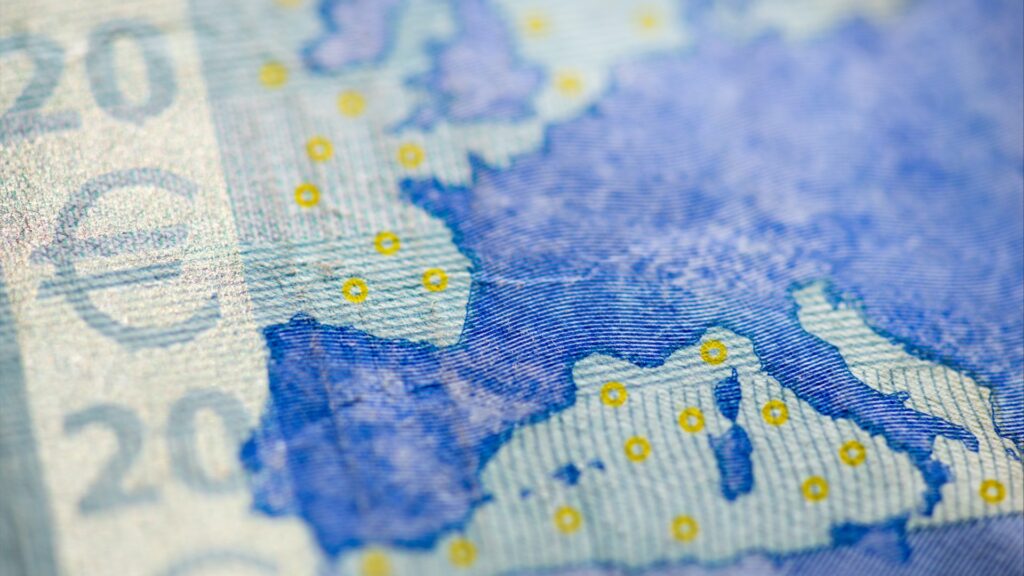The year 2020 was a peculiar year: the end of the year was also no exception and was marked by important events with uncertain outcomes. The election process in the United States (which has reached its official conclusion), Brexit (whose implementation regulated by a “deal” continues to hang by a thread) and – of course – the approval of the 2021-2027 multi-year EU budget.
On this last point, we present and comment on a long-awaited news item for our Guide readers:
the Multi-Year Financial Framework for the 2021-2027 programming period has finally been approved.
The final steps necessary for its formal validation are expected soon. Let us review the main stages of this long process, which have already been analyzed in theappropriate section of our Guide.
The EU budget so far, in brief
The process formally began in May 2018, with the presentation of the Commission’s first proposal and the European Parliament’s first resolution on the subject. The debate continued in the following months. As the framework was consolidated, we published and updated an initial outline of programs for 2021-2027.
A period of institutional turnover followed, with limited progress: the current European Parliament was elected in May 2019, and the new Commission started work in late November. Covid-19 then deeply affected the social and economic fabric of the European Union and provoked a wide-ranging response from EU institutions. The most “structural” response came in July this year, with the decision to associate additional and substantial funds for Europe’s post-Covid revitalization(Recovery Facility or Next Generation EU) with the 2021-2027 EU budget.
Since then, the debate on the establishment of the 2021-2027 financial framework has advanced in parallel with that of the Recovery Facility. Parliament has raised some important points of principle, with positive developments toward approval of both “packages” starting in September. A key agreement between Parliament and the Council was reached on November 10. This is the agreement on which the current (hopefully, final) version of the financial framework and Next Generation EU regulations are based. However, weighed down for a few weeks is the unknown factor of the veto by Poland and Hungary, which are opposed to conditions on the use of funds related to the rule of law and human rights.
The latest news from the EU budget
The last reservation of the Hungarian and Polish veto was lifted at the December 10 European Council meeting, where it was agreed to associate the rule of law and human rights clause with an “interpretative declaration” clarifying the role of the European Court of Justice in defining its application (the clause thus remains suspended during the time necessary for the Court’s judgment).
As a result, the Council approved the “package” of regulations related to the new financial framework and the Recovery Facility, avoiding the use of the provisional exercise in the administration of European funds and unlocking the substantial resources made available for the revitalization of European territories starting next year.
Following this, on December 16, the European Parliament gave its final agreement to the 2021-2027 budget. , in line with what had already been agreed with the Council on November 10 and the “points of principle” previously raised:
- The increased budget for EU “flagship programs.”
- The initiation of a binding process for the establishment of new EU “own resources.”
- Greater control over the use of funds;
- further momentum in combating climate change, protecting biodiversity and promoting equal opportunity.
Regulations on the new EU budget
The “package” of regulations defining the framework of European funds for 2021-2027 includes the following key documents:
The Decision on own resources – which defines the amounts available for the entire period, which can be quantified as €1,085.3 billion (Multiannual Financial Framework) plus €750 billion (Next Generation EU). This decision includes important new features: the possibility for the Commission to borrow up to €750 billion (under NGEU); an increase in the member states’ contribution to the EU from 1.20 percent to 1.40 percent of total gross national income (increasable by an additional 0.6 percent to meet the repayment of NGEU borrowing); and the introduction of a new own resource based on plastic packaging. In accordance with the procedure, this decision will have to be ratified by individual national parliaments;
The Regulation on the EU Instrument for Recovery – which defines the amounts and general rules for the operation and management of Next Generation EU. The general structure is as follows:
- 384.4 billion in grant aid, including:
- 47.5 to strengthen structural and cohesion programs.
- 312.5 for economic and social recovery and resilience (support for reform and investment)
- 1.9 for civil defense
- 5 for research and innovation
- 10 for the transition to a climate-neutral economy.
- 7.5 for development in rural areas
- 360 billion in loans to states for economic and social recovery and resilience (support for reform and investment)
- 5.6 billion for provisions and guarantees;
The Regulation on the new mechanism of budgetary conditionality – which allows the EU budget to be protected from violations (in particular, of the principles of the rule of law) that could undermine the financial management and financial interests of the EU (the regulation initially vetoed by Hungary and Poland);
The Regulation on the multiannual financial framework 2021-2027 – which specifically defines the distribution of European funds on the main budget lines. The general structure is as follows (we add an example of funded programs to the individual budget lines; figures are in millions):
- 1. Single Market, Innovation and Digital Agenda – 136,781Ex: Horizon Europe, InvestEU, Connecting Europe, Digital Europe, Single Market
- 2. Cohesion, resilience and values – 383,768
- 2a. Economic, social and territorial cohesion – 330,235Ex: ERDF, ESF+, Cohesion Fund, Reform Instrument, Convergence Instrument.
- 2b. Resilience and values – 53,533Ex: Erasmus+, European Solidarity Corps, Creative Europe, Rights and Values, Justice
- 3. Natural resources and environment – 356,374Ex: LIFE, EAFRD, EMFF.
- Of which: market-related expenditure and direct payments 258,594Ex: EAGF
- 4. Migration and border management 23,671Ex: Asylum and Migration Fund, Integrated Border Management Fund.
- 5. Security and defense 13,185Ex: Internal Security Fund, European Defense Fund, RescEU
- 6. Neighborhood and rest of the world 98,419Ex: Neighborhood, development and international cooperation, Pre-accession assistance, Humanitarian aid
- 7. European public administration 73,102
- Of which: administrative expenses of institutions 55,852
Total 1,083,300 mln €
Regarding the annual budget for 2021, there is already an agreement in principle between Parliament and the Council, but the Commission has been asked to submit a new proposal consistent with the 2021-2027 Multi-Year Financial Framework. It will be quickly prepared and submitted to Parliament and the Council for final approval.
News on European programs
The past weeks and days have been an opportunity to find not only a general consensus on the budget but also political agreement on many European programs. Ratification of the relevant regulations is expected soon. We cite for example:
- Horizon Europe – 95,500 mln €.
- InvestEU – €26,200 mln
- Digital Europe – €7,500 mln
- EU4Health – €5,100 mln
- Creative Europe – 3,000 mln €
- Erasmus+ – 26,000 mln €
- European Solidarity Corps – €1,009 mln
- Fund for a Just Transition – €17,500 mln
- Customs Program – 950 mln €
- European Defense Fund – €7,953 mln
- ERDF and Cohesion Fund – €234,000 mln
- Territorial Cooperation (Interreg) – 8,050 mln €.
- Provisions on common funds (Structural Funds).
- Transitional provisions on the common agricultural policy (EAFRD)
See you next year… with a Guide that will be gradually updated to the new programming period!




